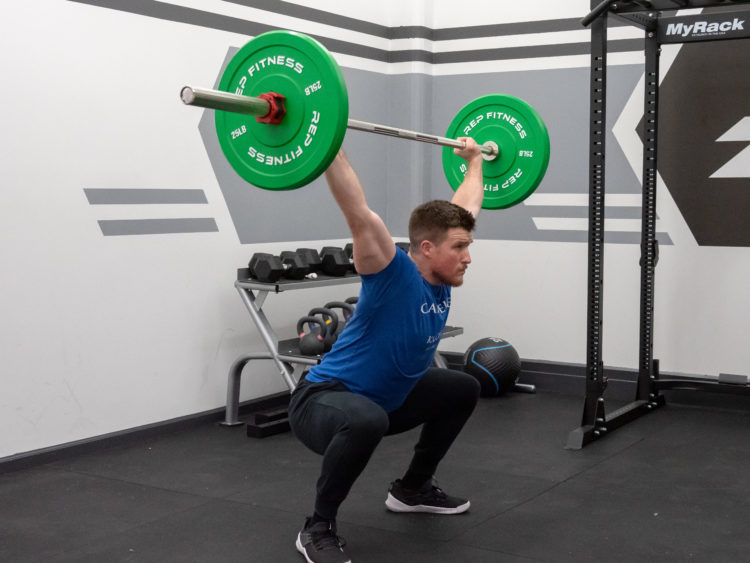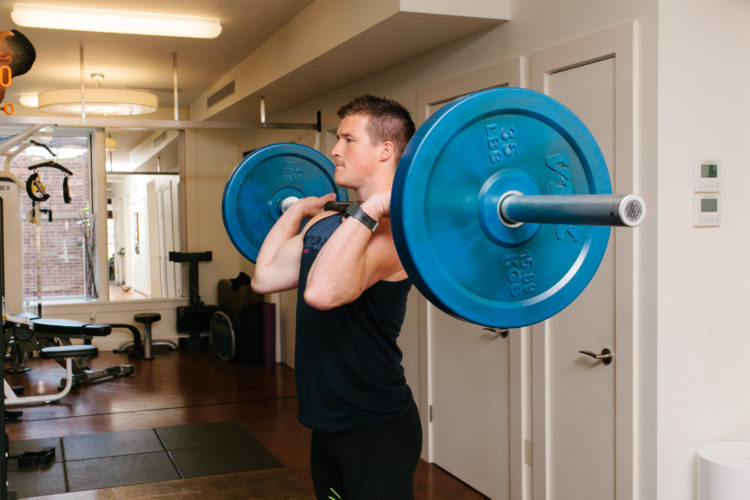Olympic weightlifting is a sport, like many others, that requires a ton of repetition. Repeating the same movements over and over again with the goal of chasing perfection.
Over time, due to unique strengths and weaknesses amongst each athlete, they might develop certain imbalances or compensation patterns. This is pretty much inevitable when it comes to virtually any sport. Repeated motions involving a high level of force production and heavy loads can cause some wear and tear.
So to improve a lifter’s longevity, coaches often implement accessory exercises into their training programs to complement the work they’re doing with the barbell.
If you’re a seasoned lifter, you might already have a pretty good idea as to which movements are most beneficial for you based on your body’s needs. For the newbies out there, it can become overwhelming when selecting appropriate accessory work to include into your training — if your coach hasn’t provided any in your program.
Olympic weightlifting already puts a ton of impact on your joints, muscles and overall structure. So, it’s important not to get carried away with these additional exercises. Overdoing it with accessory work is a mistake often made by even some higher level athletes which can have a daunting impact on their recovery. There’s a reason why coaches calculate the total volume and load per day/week/month when programming different training cycles.
Making sure you’re not putting yourself in a bigger deficit will increase your longevity in the sport and benefit your muscles’, joints’ and central nervous system’s recovery.
Here are three tips to help you pick the best accessory exercises for your weightlifting training.
Editor’s note: This article is an op-ed. The views expressed herein and in the video are the author’s and don’t necessarily reflect the views of BarBend. Claims, assertions, opinions, and quotes have been sourced exclusively by the author.
1. Emphasize unilateral movements
It’s easy to pick the fun stuff you’re good at — no one wants to do the things they can’t do well. To work on imbalances or weaknesses for this sport, it’s best to choose unilateral movements with free weights or bands. The Olympic lifts are already bilateral compound movements, so solely working one side at a time without the support of the other can help close the gap of the weakness you’re trying to eliminate.
For example, let’s say you notice a strength difference on your left side when standing up in the squat. Doing more squats at a lighter weight won’t necessarily fix this discrepancy. Given squats are already one the main strength components you train in weightlifting, it’s best to choose movements targeting the muscle groups used to perform these lifts to strengthen them individually.
Start by adding in some lunges or split squats to up the focus on your quads and glutes on that side specifically. Holding a kettlebell or dumbbells on either side for added load is a way to increase the stimulus, if appropriate for the lifter’s level of fitness and strength.
As another example, let’s say the lifter needs to improve their pulling strength but has one side firing more than the other. While pull-ups are the king of bodyweight exercises and very beneficial for weightlifters, a better choice might be opting for a single arm row with a free weight or a band. This way, you’ll be able to focus on the contraction on the side that is needing a little more work than the other.
[Related: 7 Team USA Weightlifters Share Their Favorite Accessory Exercises]
2. What’s the focus on your current cycle?
Every lifter knows (or will come to understand) the purpose of training cycles and what it means to progress into peaking for a heavy day or weightlifting meet. Is your current phase focusing more on technique? Strength? Volume? Or are you in a competition phase? Depending on what you and your coach have agreed to work on is a huge factor to take into account when choosing appropriate accessory work.
Let’s go back to the example of standing up squats with a weaker left side. If you’re in a light technique phase, you could most likely get away with doing lunges or split squats with a barbell. Using a barbell allows you to work with a heavier load but won’t impact your recovery nearly as much especially if your working weights for classic lifts aren’t above 70% of your 1RM. (That’s a complicated sentence, read it again.)
Now, if you’re nearing a competition phase, dialing it back on the load and volume is a wise choice. Every single Olympic lift involves your legs, so ensuring adequate recovery for your lower body is of utmost importance during this phase. Slamming yourself with a ton of split squats is probably not going to help your recovery. As much as your muscles need the rest, your joints and nervous system need it as well!
To factor in the volume and load you’ll be placing on your body throughout these phases, here’s a good rule of thumb to use: the closer you get to a competition or peaking phase, the lighter the accessory work you do should be. Shift to using bands or bodyweight movements and decrease the frequency you’re training them.
[Related: 5 Weightlifting Accessories to Improve Overhead Performance]
3. How does this movement translate to the Olympic lifts?
Variety is flashy and appealing—but not always the most effective.
An exercise could target the area you’re trying to work on, but ask yourself if the purpose translates to supporting your goal of improving your Olympic lifts. Accessory movements are meant to support the snatch, the clean and jerk, and any other positions used frequently in these lifts (such as squats and pulls). Thanks to social media, it’s easy to get caught up in adding unnecessary exercises to your training day because you saw your favorite influencer do them last Tuesday.
Coming back to the lunge and split squat example: these two unilateral leg exercises are highly beneficial because they mimic the split jerk, which can translate nicely into strengthening this specific position. As mentioned above in the first bullet point, you’ll also be improving your general leg strength as they target dominant muscle groups used in every Olympic lift.
Wrapping Up
The purpose of accessory exercises is right in its name: they’re meant to accessorize your training. They shouldn’t be the cause of under-recovering, they should support the progress you’re making in your weightlifting training.
Choose them based on your weaknesses, the current cycle you’re in, and how well they actually translate to the snatch and the clean and jerk. If you need some ideas on which actual movements to choose to support the above, check out BarBend’s unique exercise guide here. Use the filters to narrow your search and find the best exercises to help with your weightlifting progress.


